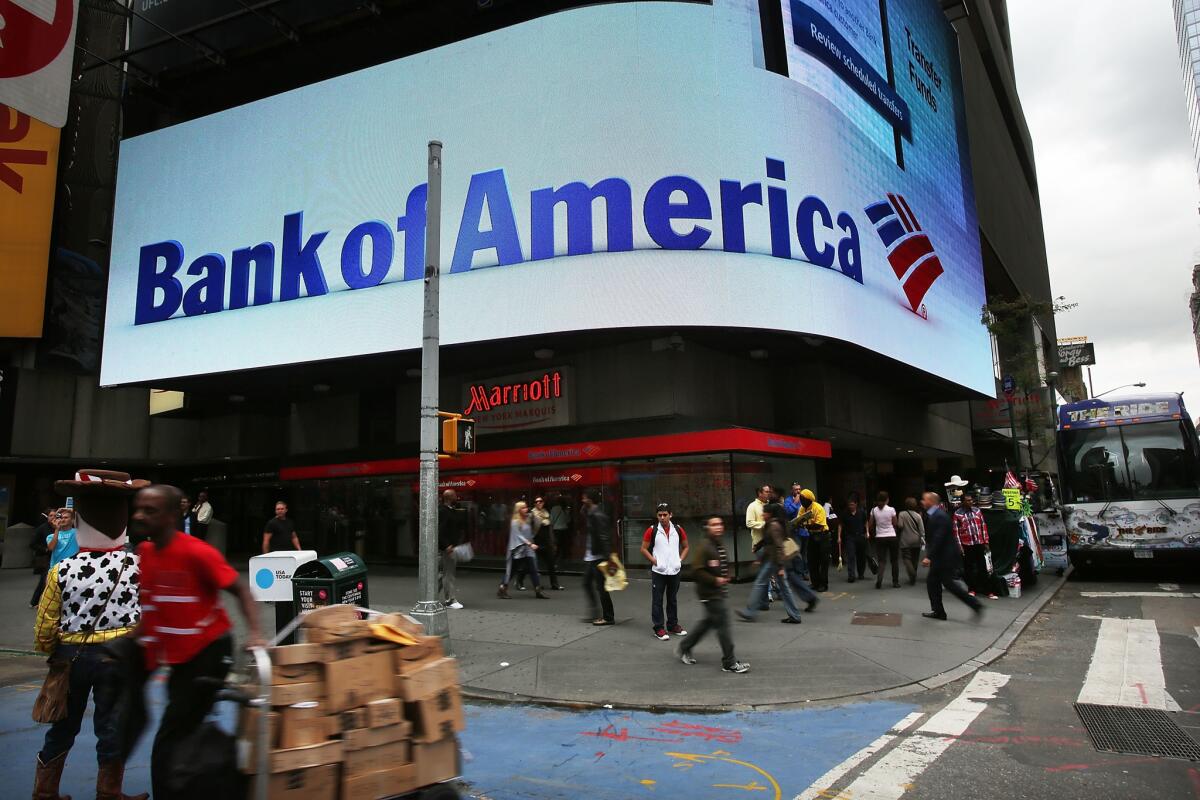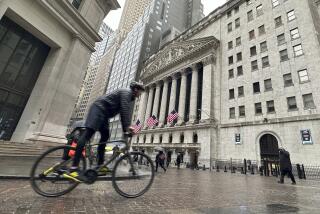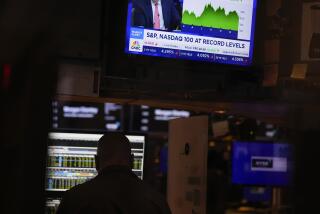Volatility in stock, bond and currency markets could boost bank profits

Profits at the nation’s six largest banks are expected to be around $22 billion for the first quarter of 2015, a jump from $17.71 billion a year earlier. Part of the reason for the expected sharp increase is because Bank of America took a $6-billion charge last year for legal expenses. Above, a Bank of America branch in New York.
Wild swings in the stock, bond and currency markets in the first three months of the year are likely to translate into bigger profits for big U.S. banks, analysts say.
Investors will get quarterly results from the nation’s major banks in the next two weeks, including Bank of America, Citigroup, Goldman Sachs, JPMorgan Chase, Morgan Stanley and Wells Fargo.
Profits at the nation’s six largest banks are expected to be around $22 billion for the first quarter of 2015, a jump from $17.71 billion a year earlier, according to FactSet. Part of the reason for the expected sharp increase is because Bank of America took a $6-billion charge last year for legal expenses.
Market volatility may make average investors nervous, but it can be good for investment banks. As trading volume rises, banks earn more in commissions. It also enables traders to take advantage of swings in markets to make a profit.
“The investment banks need volatility and volume to really profit. They got both,” said Nancy Bush, an independent banking industry financial analyst with NAB Research.
Two of the places where volatility was most noticeable last quarter was in the currency and commodities markets.
The dollar has gained more than 10% against the euro just this year, a significant move. Other currencies have also been volatile. The European Central Bank started its own bond-buying program this year, which has pushed the euro lower against other major currencies. The Swiss franc had its biggest one-day move in history in January after the Swiss National Bank announced it would allow the franc to appreciate against the euro.
Niche indexes that track volatility in currency markets, like the Deutsche Bank Currency Volatility index, are up 40% year-over-year.
Commodities markets have been just as volatile. The price of oil has plunged 50% over the last year and has had many days of huge swings.
Not all banks are expected to benefit equally. Banks with sizable trading desks, including Goldman Sachs, Morgan Stanley, JPMorgan and Citigroup, have more exposure to these markets. “Custodial” banks, which hold large amounts of assets in trust for other investors, including State Street and Bank of New York Mellon, are also likely beneficiaries, analysts say.
Consumer-focused banks such as Bank of America and Wells Fargo are likely to report less impressive results because of weakness in the economy and extremely low interest rates.
When economic times are good, banks are typically able to earn more money from the higher interest they charge borrowers. Since the Federal Reserve has kept interest rates near zero and U.S. Treasury yields have gone down from a year ago, there is little opportunity for banks to lend at higher rates.
“The fundamental backdrop for these commercial banks is pretty challenging at the moment,” said Fred Cannon, director of research at Keefe, Bruyette & Woods.






